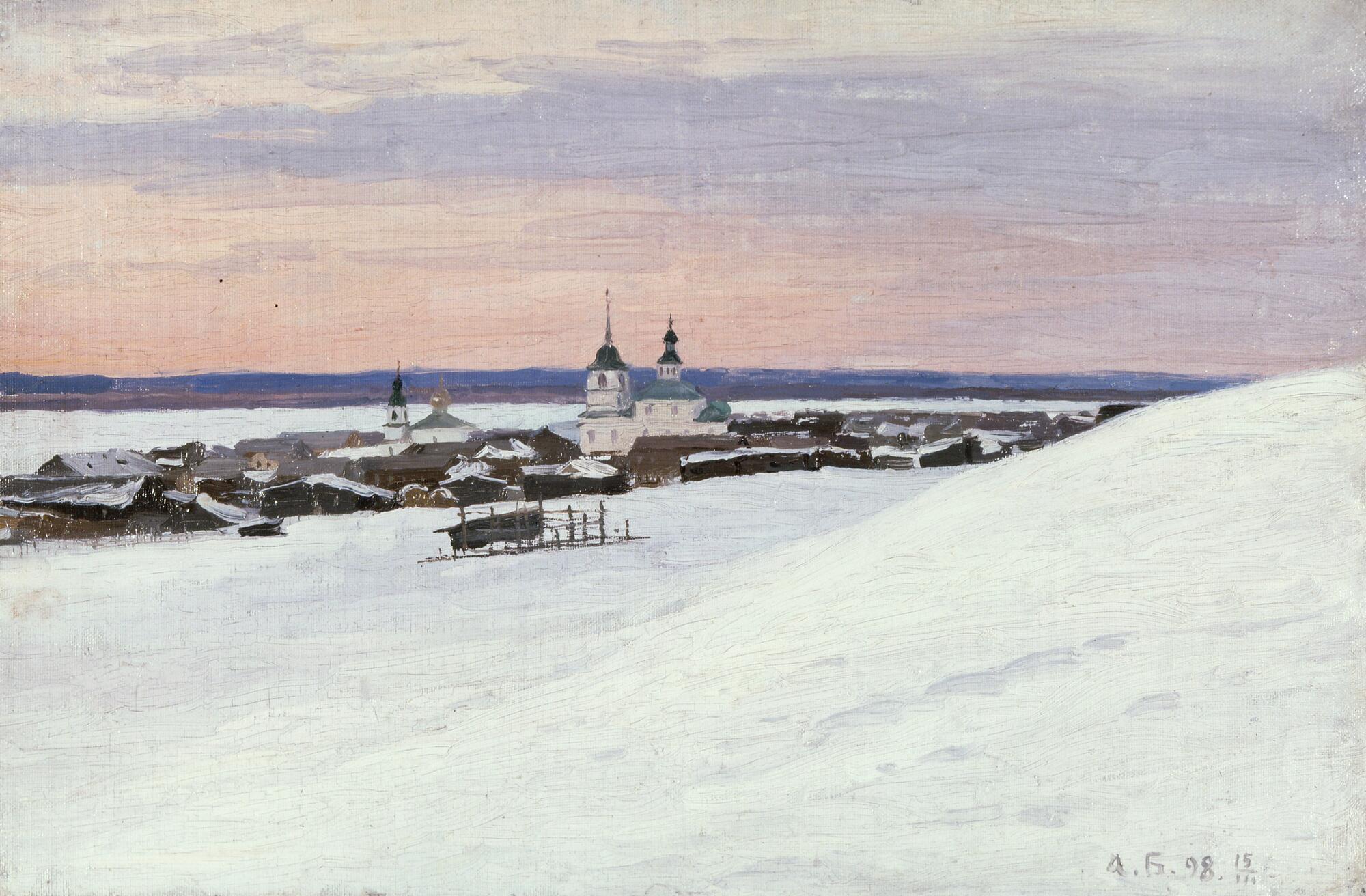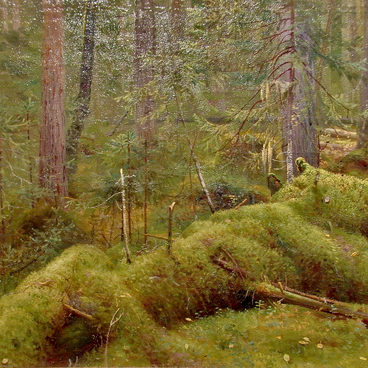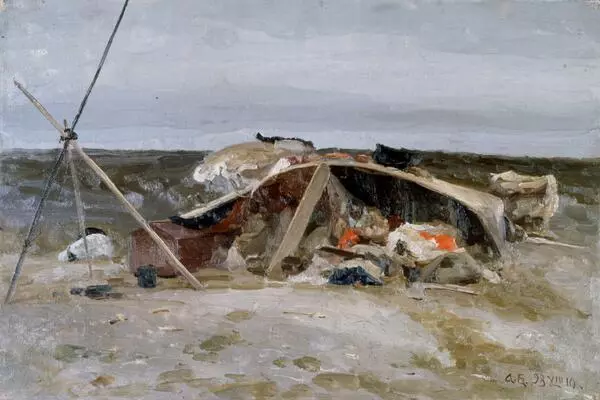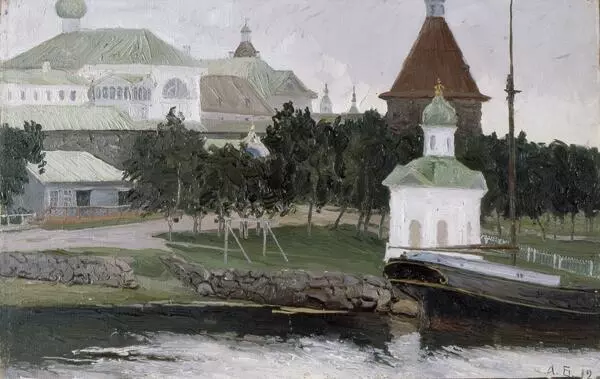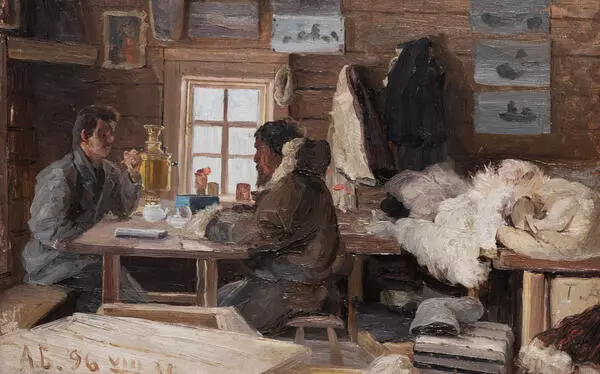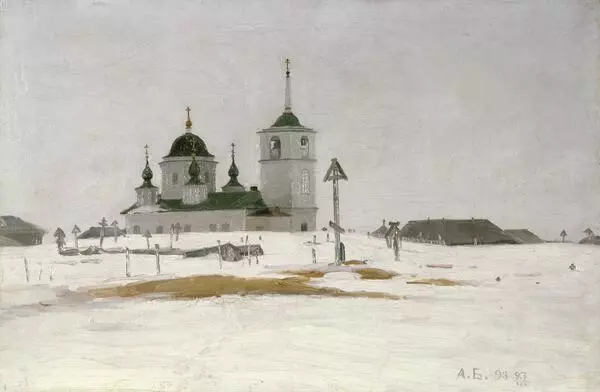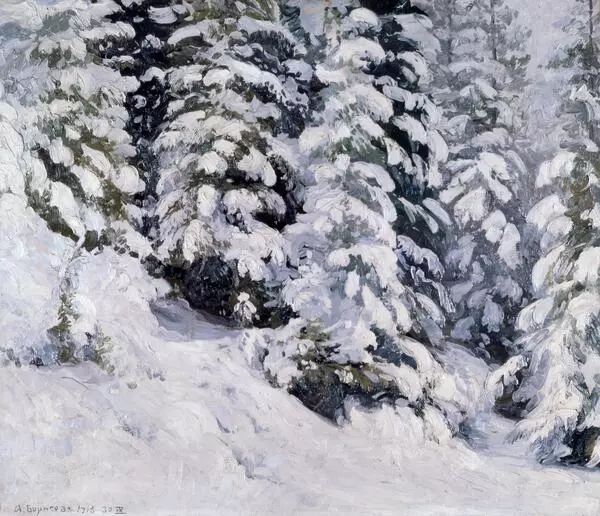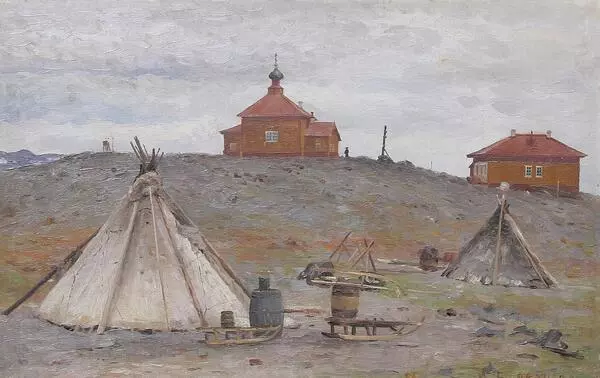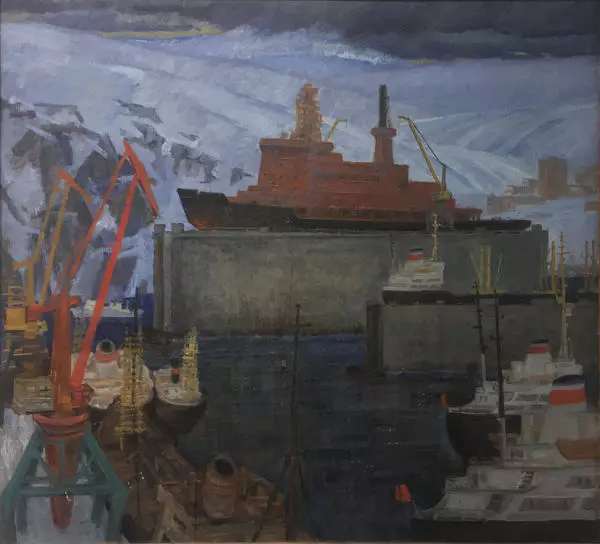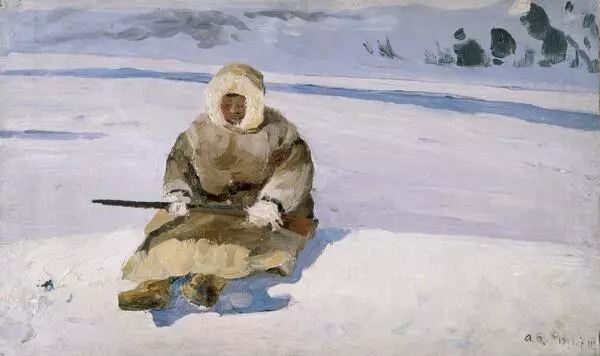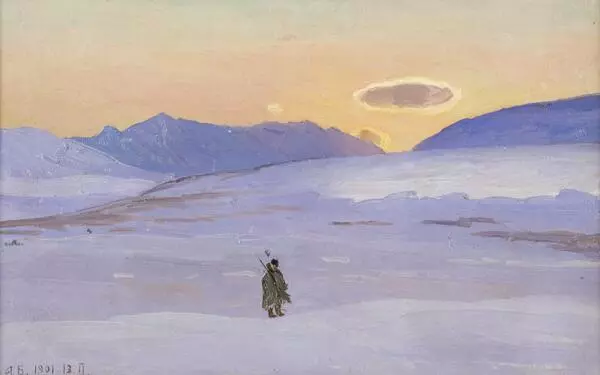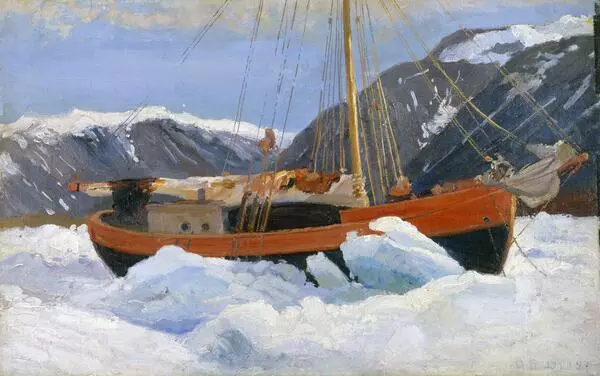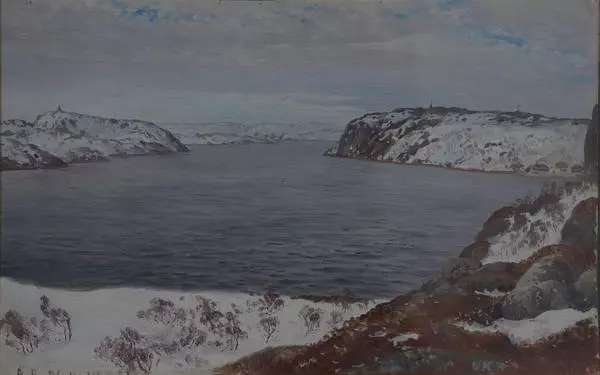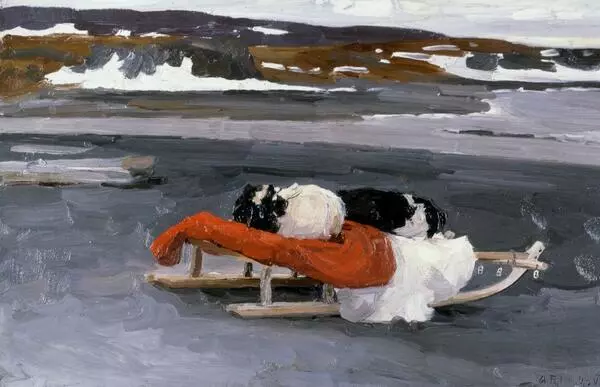Alexander Borisov was planning an artistic expedition to the Arctic for several years. In 1896, when he first visited Novaya Zemlya, he resolved he would come to this island again and spend eighteen months or even more. For him, Novaya Zemlya became a land of cherished dreams.
However, organizing an Arctic expedition is a complex and expensive endeavour. The artist had to possess outstanding management skills, will power and excellent physical abilities, as well as capacity to adapt in harsh northern conditions.
To test himself, Borisov undertook an artistic expedition across the tundra. He embarked on a journey in Arkhangelsk and moved across the old land routes all the way to the Vaygach Island.
This is what he wrote: ‘It is a very slow ride from the Pinega River to the Mezen River, and especially from the Mezen River to the Pechora River. This is because there are no villages nor settlements, only a dense, endless forest and shabby posting stations standing about 25 km apart from each other. Sometimes, you arrive at the station only to find out that the horses have just left carrying the post. There is nothing to do about it, you just have to stay and wait until they come back and get fed, and all this will happen in no less than nine or ten hours. Hours like this drag endlessly by, and you are bored to death.’
It was in Ust-Tsilma, a settlement situated on the right bank of Pechora, that Borisov first broke the journey for a few days. An entry in his diary reads: ‘Ust-Tsilma settlement, an administrative centre of Pechorsky Uyezd, is situated on the right bank of the Pechora River opposite the Tsilma River. It is mostly populated by Old Believers. They cultivate barley. The main vital source is fishing. It is possible that Ust-Tsilma will soon become a busy, economically developed town. Locals say there is a mire nearby covered with kerosene slick. Analysis has shown it is high-quality petroleum. The only question is if there is much of it. If there is much of it, the region will come alive. With regard to the artistic value, the settlement is quite poor.’
There is no oil production in Ust-Tsilma at the moment. The main economic activities are logging, agriculture and ecotourism. But the town is quite large and has its own airport.
However, organizing an Arctic expedition is a complex and expensive endeavour. The artist had to possess outstanding management skills, will power and excellent physical abilities, as well as capacity to adapt in harsh northern conditions.
To test himself, Borisov undertook an artistic expedition across the tundra. He embarked on a journey in Arkhangelsk and moved across the old land routes all the way to the Vaygach Island.
This is what he wrote: ‘It is a very slow ride from the Pinega River to the Mezen River, and especially from the Mezen River to the Pechora River. This is because there are no villages nor settlements, only a dense, endless forest and shabby posting stations standing about 25 km apart from each other. Sometimes, you arrive at the station only to find out that the horses have just left carrying the post. There is nothing to do about it, you just have to stay and wait until they come back and get fed, and all this will happen in no less than nine or ten hours. Hours like this drag endlessly by, and you are bored to death.’
It was in Ust-Tsilma, a settlement situated on the right bank of Pechora, that Borisov first broke the journey for a few days. An entry in his diary reads: ‘Ust-Tsilma settlement, an administrative centre of Pechorsky Uyezd, is situated on the right bank of the Pechora River opposite the Tsilma River. It is mostly populated by Old Believers. They cultivate barley. The main vital source is fishing. It is possible that Ust-Tsilma will soon become a busy, economically developed town. Locals say there is a mire nearby covered with kerosene slick. Analysis has shown it is high-quality petroleum. The only question is if there is much of it. If there is much of it, the region will come alive. With regard to the artistic value, the settlement is quite poor.’
There is no oil production in Ust-Tsilma at the moment. The main economic activities are logging, agriculture and ecotourism. But the town is quite large and has its own airport.
